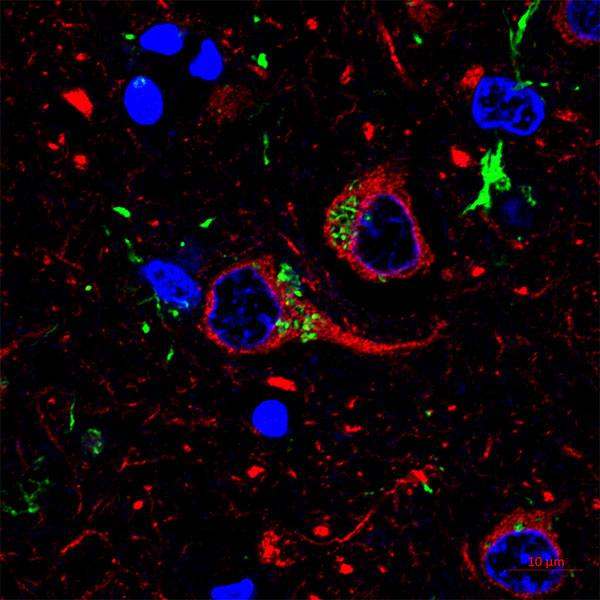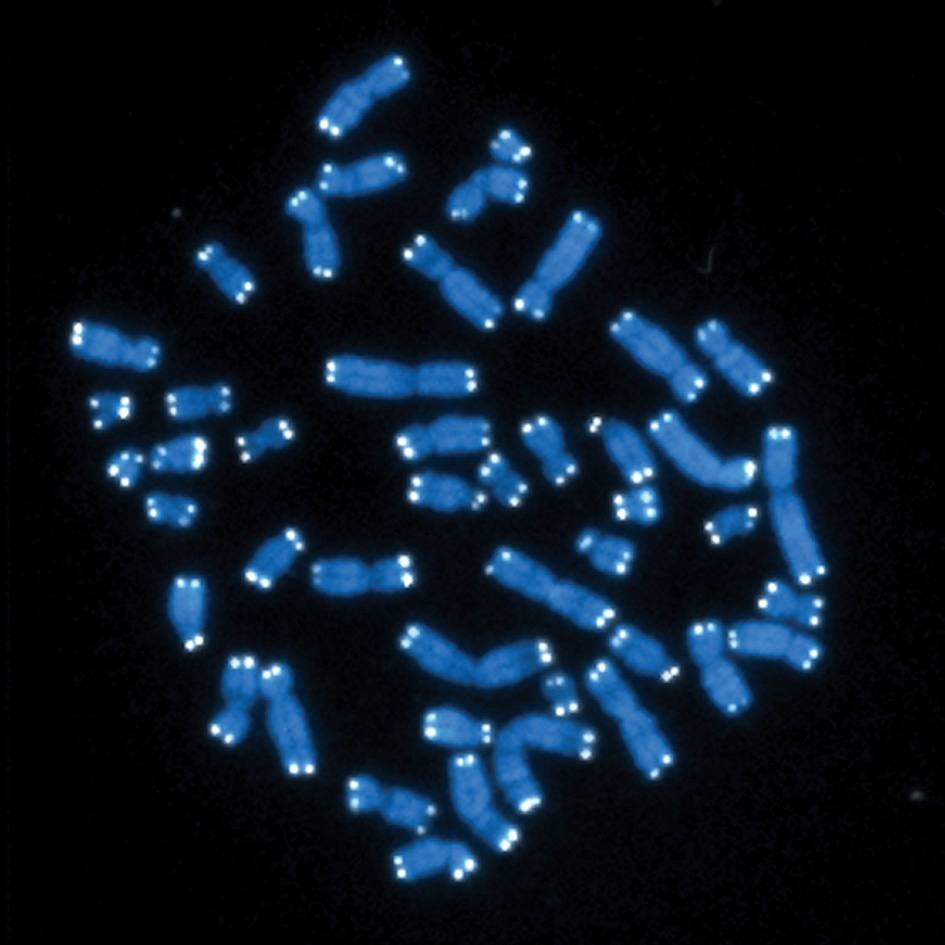-
Aging
A New View of Alzheimer’s
As we age and forget why we walked into a particular room, we may joke about our incipient "Alzheimer's."
But Alzheimer's disease is no joke. It's a deadly and devastating disease that affects more than 5.5 million Americans — and probably millions more. It causes memory loss and debilitating dementia. And Alzheimer's is the third-leading cause of death of older people, behind heart disease and cancer. Any self-deprecating kidding only masks our fear of Alzheimer's.
"Everybody's concerned about heart disease and cancer. They should be. But in fact, it's Alzheimer's that's most frightening to people," says Ronald Petersen, M.D., Ph.D., director of Mayo Clinic's Alzheimer's Disease Research Center and Mayo Clinic Study of Aging. "It's sort of a dissolution of the person. Everything that makes a person a person — the memories that that person has about his or her life, family, all that kind of background — gradually dissolves over time so that the person becomes unattached to the environment and those around."
Dr. Petersen and his colleague, Clifford Jack Jr., M.D., a Mayo Clinic neuroradiologist, are at the forefront of an international reappraisal of Alzheimer's that's changing how we think about the onset and progression of the disease.

Plaques and Tangles
Dr. Alois Alzheimer, a German psychiatrist and neuropathologist, in 1906 described a patient with progressive memory loss, language problems, unpredictable behavior and paranoia. After she died, he dissected her brain to discover abnormal accretions and tangled fibers.
It is this combination of amyloid protein plaques around the nerve cells and tangles of tau protein within the cells that distinguishes the condition that came to be known as Alzheimer's disease.
It isn't clear whether the amyloid and tau actually cause the dementia associated with Alzheimer's. Nor is it clear what causes amyloid and tau to form. At minimum, the appearance of plaques and tangles signal a cascade of changes to the brain that usually precede dementia.
"No one can really prove exactly what causes the disease. But it's pretty clear that it's the tau protein that is most closely associated with cognitive symptoms," says Dr. Jack. "There's also very good evidence that no one gets a lot of tau in the brain — the Alzheimer's form of tau — unless they have amyloid first. So the role of amyloid is to promote the spread of tau."
It's also clear that amyloid plaques and tau tangles become far more likely to appear as people age.
Probable Alzheimer's
For more than a century, there was no way to know if plaques and tangles were present, except through autopsy. That meant doctors couldn't diagnose Alzheimer's definitively in living patients. They could only note the failing memory and other declining cognitive skills.
"You had to rule out a bunch of other things — stroke, tumor, blood clot. Then it was identified as 'probable Alzheimer's disease,'" says Dr. Petersen. "But it couldn't be definite Alzheimer's disease until the person passed away, had an autopsy, you look at the brain, you see plaques and tangles."

Diagnosis only after death creates problems both in clinical treatment and research.
Health care providers often have no clear etiologic diagnosis to offer patients. That is, they can't be sure of the cause. There are many brain pathologies that can lead to or contribute to dementia, especially among the elderly. These pathologies include Lewy bodies, frontotemporal disorders and vascular brain injury. These causes of dementia often occur simultaneously, making an etiologic diagnosis more difficult. That is unsatisfying for patients and family who want explanations. The lack of a clear etiology also makes it difficult to chart a likely progression of clinical symptoms.
Furthermore, dementia signals the disease is already well-advanced. "If we wait until symptoms develop, it may be too late," says Petersen. "You may be able to slow things down, but a lot of damage has been done in the central nervous system already."
At this point, the concern over treatment is academic since we have no effective treatment for Alzheimer's. But the uncertainty of etiologic diagnosis also poses problems for finding a cure.
For example, nearly a third of patients enrolled in clinical trials in the first decade and a half of this century to test treatment of Alzheimer’s turn out not to have Alzheimer’s at all, but some other etiology for their cognitive impairment.
"Think about it. Think of a cancer trial where a third of the people don't have cancer," says Dr. Jack.
"Have We Met?"
Drs. Petersen and Jack have been working together so long that when Dr. Petersen comes into a room, he greets a stranger and then turns to Dr. Jack and jokes, "Have we met?"
But of course they have, collaborating on hundreds of scientific articles over the past 30 years. Dr. Jack began work at Mayo Clinic more than 30 years ago, imaging the brain of epilepsy patients to determine if one side of the brain is more responsible for seizures than the other, and to plan surgery. Dr. Petersen came to Mayo after a stint as a U.S. Army cognitive psychologist investigating the effects of various drugs, such as an antidote for nerve gas, on memory. He left the Army to get a medical degree and came to Mayo Clinic in 1986 to research and treat learning and memory disorders, especially Alzheimer's disease.
That's when the two doctors met. They began discussing the use of imaging to study changes in the brains of suspected Alzheimer's patients.
Back then, because diagnosis of probable Alzheimer's depended first on identifying dementia, the disease was viewed as synonymous with its most obvious symptom. Alzheimer's was dementia. Patients were cognitively normal until they became demented, and that's when they had Alzheimer's.
But Dr. Petersen suspected there was a long progression of mental changes, including what he called "mild cognitive impairment" that preceded dementia. He based his work on clinical experience and demographic health data from Olmsted County, Minnesota, which surrounds Mayo Clinic's Rochester campus. This source of information is now called the Mayo Clinic Study of Aging.
"Colleagues and I observed there were people kind of in between. They looked pretty good, but their memory wasn't quite where you might expect it to be," says Dr. Petersen. "Or they have some subjective concern, 'Boy, my memory is not what it used to be, and it bothers me.' Or they may have some behavioral symptoms: 'I'm a little more anxious, a little depressed. Maybe I'm more apathetic than I used to be.'"
"In retrospect, it's easy to look back and say, of course, there has to be this intermediate phase of mild cognitive impairment people go through," says Dr. Jack. "It was Ron's original work that put that concept on the map."
These kinds of patients — not completely normal, yet far from exhibiting dementia—were accounted for in a three-level staging system developed by expert panels that included Drs. Jack and Petersen. This system was adopted in 2011 by the National Institute on Aging and the Alzheimer's Association. While the old guidelines addressed only dementia, the new guidelines also recognize that Alzheimer's patients in the incipient stages of the disease would exhibit first normal cognition and then mild cognitive impairment.
Diagnosis by Biomarkers
Back up a few years. In 2004 researchers at the University of Pittsburgh discovered a compound that would bind to amyloid. By tagging the compound with radioactive tracers, neuroradiologists could see the plaques in a living patient.
"Researchers in the field immediately recognized the value of this," says Dr. Jack.
Drs. Jack and Petersen co-authored a study in 2010 that was published in The Lancet Neurology. The study argued this point: Alzheimer's disease first appears as amyloid plaques in the brain while cognition is normal. Only much later does the patient progress to mild cognitive impairment and then dementia. For that reason, the disease should be defined by its underlying biology — the formation of plaques — and not the symptoms of dementia it eventually produces.
"Alzheimer's disease is a cause," says Dr. Jack. "Dementia is a result."
Then, in 2013, researchers at Siemens discovered a compound that could be used to image tau tangles in the brain. Now scientists had the tools they needed to identify amyloid plaques and tau tangles, the characteristic signs of Alzheimer's, years or even decades before the appearance of cognitive decline.

In 2018, Dr. Jack and a team of colleagues published a "research framework" with the National Institute on Aging and the Alzheimer's Association that detailed how Alzheimer's disease would be diagnosed by its biological markers, not by dementia.
"You could be squeaky clean normal. You could have severe dementia. That's all Alzheimer's disease," says Dr. Petersen. "That's going to be the challenging education program for everybody — for scientists, the general field and the public."
Dr. Petersen compares the changing view of Alzheimer's disease to diagnosing prostate cancer: "If you do a biopsy of your prostate and it's positive, you've got prostate cancer. It may never affect you in your life, but you have prostate cancer. Similarly, if you've got the biomarkers for both amyloid and tau, you have Alzheimer's."
This Changes the Field
The new definition of Alzheimer's disease changes the field of research and treatment.
For one, it means a lot more people have Alzheimer's. In the past, many people with Alzheimer's were never diagnosed because the family didn't request an autopsy. And many people with the diagnostic plaques and tangles have yet to be diagnosed because they don't show symptoms of impairment. So now, in addition to the 5.5 million living Americans who have "probable Alzheimer's," there are perhaps 10 million more with plaques and tangles but no outward symptoms.
On a more hopeful note, the change in diagnosis opens new research possibilities:
- Investigators can study the early stages of the disease long before cognitive symptoms appear.
- Researchers can be sure their study volunteers actually have Alzheimer's, rather than some other cause for dementia.
- Scientists can trace how the spread of plaques and tangles corresponds to cognitive decline.
- Researchers will be able to measure whether new drugs halt or shrink plaques and tangles — something that until now was impossible.
For now, the new diagnostics are for research only. Your doctor won't image your brain for signs of Alzheimer's because there's still no treatment to offer.
That may soon change. Dr. Petersen says that promising drug studies are underway. He remains optimistic even in the face of recent clinical trial failures. "We can now image the amyloid and tau in the brain, and when disease-modifying therapies are developed, we will be able to measure their impact on the underlying intended targets using these imaging modalities. That is a tremendous advantage for drug development."
Effective treatment will become even more important as the U.S. ages — not only for patients, but also for the health care system.
"The country recently spent $277 billion caring for people with Alzheimer's disease in a single year," says Dr. Petersen. "If that were to continue, it will be over $1 trillion a year caring for people by 2050. That's unsustainable."
"By the use of biomarkers now, we no longer have to wait for the clinical symptoms. We can pick the disease up in its incipient state and try to intervene."
- Greg Breining, May 2019







